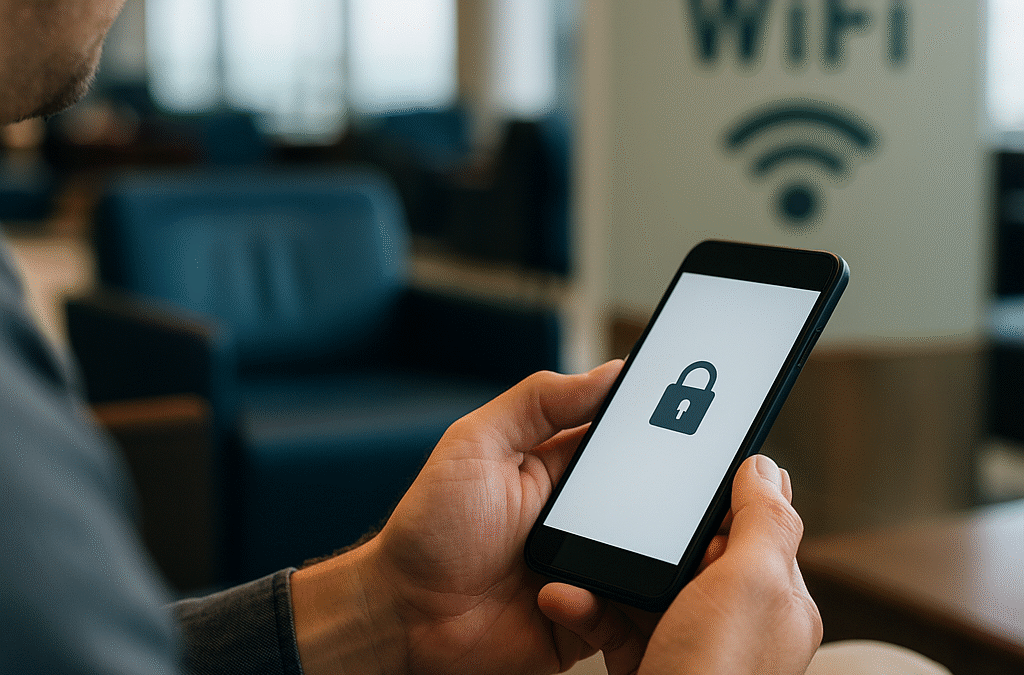Why public WiFi is risky
Public WiFi is shared by strangers. Many hotspots do not encrypt the traffic between your phone and the access point. Your data can travel in plain text. Attackers on the same network can capture the information you send. Airports, hotels, and large attractions are common targets because travellers are distracted.
How attackers steal your data
Rogue access points
Criminals copy network names like Hotel Guest or Free Airport WiFi. If you connect to the fake name, all your traffic flows through the attacker. They can record passwords and redirect you to fake login pages that look real.
Packet sniffing
Attackers quietly monitor the network and observe unencrypted traffic. If a website is not fully secured with HTTPS, they can read content. Even with HTTPS active, they can still see the sites you visit. That information can help build identity profiles.
Man in the middle attacks
In this attack, the criminal places themselves between you and the service you use. They relay data back and forward without your knowledge. They can alter content, inject malicious code, and steal login cookies. This can allow account takeover later.
Why travellers are prime targets
Hotels have large networks with many devices on them. Network monitoring is limited. Attackers can stay one night, harvest data, and leave without a trace. Airports are crowded with travellers checking bookings, work email, and banking apps. That information has value. Theme parks focus on convenience. Thousands connect daily. Security is not their priority.
Why these risks exist
Public WiFi lets anyone in range join the network. You share that network with unknown devices. Identity checks are rare. Encryption settings are often weak. Once connected, you expose your device to strangers you cannot see. Criminals rely on travellers assuming everything is safe.
Why mobile data on 4G and 5G is safer
Mobile data encrypts traffic between your device and your carrier. Attackers cannot sit beside you and capture packets. Creating fake mobile towers is difficult. Carriers operate hardened infrastructure with security teams. You do not share the local network layer with strangers. Apps often add end to end encryption, which lowers risk further.
What about VPNs
A VPN can help protect traffic on untrusted WiFi networks, but it is not a complete solution. If the attacker captures credentials before the VPN tunnel forms, the damage is already done. A VPN cannot stop fake login pages or phishing websites. Treat it as a layer of protection, not your only defence.
Simple safer setup for your trip
Use a local USA eSIM. Activate before you fly or as soon as you land. Turn off WiFi in public places. Use mobile data for email, banking, maps, rideshare, and ticketing apps. If you must use WiFi, only do so on a network you control. Avoid unknown networks at hotels, airports, and busy attractions.
Business travellers, take extra care
Corporate accounts are valuable. One insecure airport session can lead to a breach. Attackers can pivot from a laptop into a company network. That becomes a major incident. Keep WiFi off in public places, use mobile data, and enable multi factor authentication on work accounts.
Key takeaways
Public WiFi is convenient but risky.
Rogue hotspots, sniffing, and man in the middle attacks are common.
Mobile data on 4G or 5G isolates you from attackers.
An eSIM gives instant secure connectivity on arrival.
The cost of mobile data is tiny compared to identity theft.
Call to action
Ready to avoid public WiFi and stay secure in the United States. Choose a USA prepaid SIM with fast 4G or 5G and go online the moment you land. It is one of the easiest ways to protect your data while travelling.

